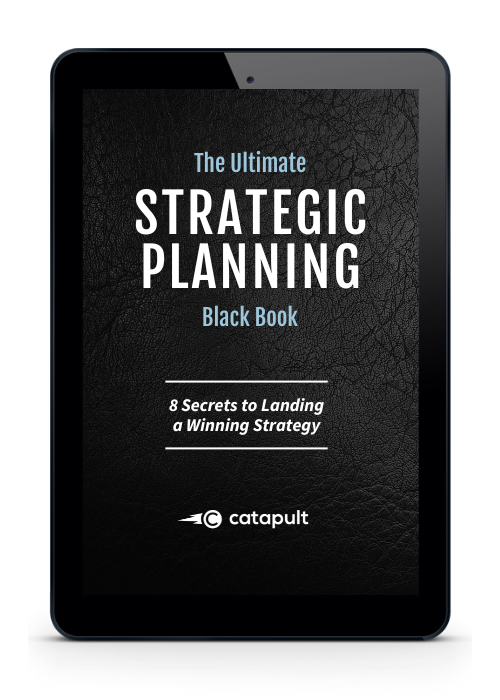No Results Found
The page you requested could not be found. Try refining your search, or use the navigation above to locate the post.

Sahil Bloom is one of our favorite thinkers and writers in the growth, innovation and leadership space. Last year, he dropped 20 Paradoxes that we’ve been thinking about for the last 12 months. We’ve gone ahead and made some edits, but this is largely his thought leadership.
As we think about leadership and life in a wholistic way, believing that the best leaders are also fully-orbed, healthy human beings, these paradoxes struck as something we’d want every leader to chew and reflect on. They are almost modern proverbs.
Have you noticed that the most argumentative people rarely persuade anyone? The most persuasive people don’t argue—they observe, listen, and ask questions. Argue less, persuade more. Persuasion is an art that requires a paintbrush, not a sledgehammer.
You have to put in more effort to make something appear effortless. Effortless, elegant performances are often the result of a large volume of effortful, gritty practice. Small things become big things. Simple is not simple.
“The more I learn, the more I realize how much I don’t know.” — Albert Einstein
The more you learn, the more you are exposed to the immense unknown. This should be empowering, not frightening. Embrace your own ignorance. Embrace lifelong learning.
Growth takes a much longer time coming than you think, and then it happens much faster than you ever would have thought. Growth happens gradually, then suddenly.
When you realize this, you start to do things differently.
Work longer, get less done.
Parkinson’s Law says that work expands to fill the time available for its completion. When you establish fixed hours to your work, you find unproductive ways to fill it.
Work like a lion instead—sprint, rest, repeat.
You have to slow down to speed up. Slowing down gives you the time to be deliberate with your actions.
You can focus, gather energy, and deploy your resources more efficiently. It allows you to focus on leverage and ROI, not effort.
Move slow to move fast.
You have to lose money in order to make money. Every successful investor & builder has stories of the invaluable lessons learned from a terrible loss in their career.
Sometimes you have to pay to learn. Put skin in the game. Scared money don’t make money!
The more news you consume, the less well-informed you are. The @nntaleb noise bottleneck: More data leads to a higher noise-to-signal ratio, so you end up knowing less about what is actually going on.
Want to know more about the world? Turn off the news.
Icarus crafted wings—but flew too close to the sun, so they melted and he fell to his death.
What makes you successful can lead to your downfall. An incumbent achieves success with one thing, but overconfidence blinds them to coming disruption.
Beware!
You have to fail more to succeed more. Our greatest moments of growth often stem directly from our greatest failures.
Don’t fear failure, just learn to fail smart and fast.
Getting punched in the face builds a strong jaw.
“I must be cruel only to be kind.” — Hamlet
In Hamlet, the protagonist is forced to take a seemingly cruel action in order to prevent a much larger harm.
Life is so complex. The long-term righteous course may be the one that appears short-term anything but.
In investing, the willingness to admit you have no competitive advantage can be the ultimate competitive advantage. Strong self-awareness breeds high-quality decision-making. Foolish self-confidence breeds nothing of use.
Be self-aware—act accordingly.
In order to grow, sometimes you need to shrink.
Growth is never linear. Shedding deadweight may feel like a step back, but it is a necessity for long-term growth.
One step back, two steps forward is a recipe for consistent, long-term success.
Know your death in order to truly live your life.
Memento Mori is a Stoic reminder of the certainty and inescapability of death. It is not intended to be morbid; rather, to clarify, illuminate, and inspire.
Death is inevitable. Live while you’re alive.
Take on less, accomplish more.
Success doesn’t come from taking on everything that comes your way.
It comes from focus—deep focus on the tasks that really matter.
Say yes to what matters, say no to what doesn’t.
Protect your time as a gift to be cherished.
“We have two ears and one mouth so that we can listen twice as much as we speak.” — Epictetus
If you want your words and ideas to be heard, start by talking less and listening more.
You’ll find more power in your words.
Talk less to be heard more.
More connectedness, less connected. We’re constantly connected, bombarded by notifications and dopamine hits.
But while we have more connectedness, we feel less connected.
Put down the phone. Look someone in the eye. Have a conversation. Breathe.
Looking the part is sometimes the worst indicator of competency.
The one who doesn’t look the part has had to overcome much more to achieve its status than the one from central casting.
If forced to choose, choose the one that doesn’t look the part.
You may have to stop looking in order to find what you are looking for.
Have you noticed that when you are looking for something, you rarely find it?
Stop looking—what you’re looking for may just find you.
Applies to love, business, investing, or life…
“When you are finished changing, you are finished.” — Benjamin Franklin
The only constant in life is change.
Entropy is reality.
It’s the one thing you can always count on—the only constant.
Embrace it—be dynamic, be adaptable.
More controlling, less control.
We have all seen or experienced this as children, partners, or parents.
The most controlling often end up with the least control.
Humans are wired for independence—any attempts to counter this will be met with resistance.
The thing we fear the most is often the thing we most need to do.
Fears—when avoided—become limiters on our growth and life.
Make a habit of getting closer to your fears.
Then take the leap (metaphorically!)—you may just find growth on the other side.
Follow @SahilBloom for more threads on growth, business, and decision-making. He also writes deep-dives on these topics in his weekly newsletter, which you can join here: https://sahilbloom.substack.com
The page you requested could not be found. Try refining your search, or use the navigation above to locate the post.

In the realm of nonprofit organizations where every dollar donated is a potential lifeline for a cause, the expertise of nonprofit consultants can shine like a guiding star. Their goal is to work behind the scenes using their knowledge and experience to help nonprofits thrive, grow, and make a meaningful impact on the world.
In this article, we will introduce you to some of the brightest minds in the nonprofit consultancy sphere. These 10 nonprofit consultants are experts in their respective fields with a priority empowering organizations.
Notice their unique approaches and deep insights that have helped many nonprofits by enabling them to reach new heights.
Meet the strategist extraordinaire who can turn a vague vision into a concrete roadmap for success. With a penchant for dissecting complex challenges and crafting innovative solutions, this consultant has helped nonprofits refine their mission, set clear objectives, and navigate the treacherous waters of the nonprofit landscape.
Our recommendation:
What makes this nonprofit strategic planning consultant unique?
Yes, we were brave enough to put ourselves on this list. Catapult brings a wholistic, innovative approach to strategic planning using their 6A Planning Process that often results in nonprofits having 10X impact without having to dramatically increase their annual revenue. You can find out more here.
In today’s digital age where everyone has the internet in the palm of their hand, utilizing Google’s Ad Grant program is an essential for every nonprofit (they give away $10K a month for nonprofits to spend on Google Ads). This consultant can help nonprofits find new donors, volunteers, advocates, and beneficiaries by choosing high-quality keywords and suggesting digital marketing strategies around those keywords.
Our recommendation:
What makes this nonprofit Ad Grant consultant unique?
They have a flat rate they charge per month, run everything soup to nuts, are highly effective at targeting and make the grant writing and approval process through Google frictionless.
Navigating the complexities of the nonprofit sector can be a daunting task when it comes to executive compensation, pay bands and benefits. This consultant serves as a compass to all things HR related, ensuring that employee compensation operates within the bounds of the law while maximizing what is possible.
Our recommendation:
What makes this nonprofit HR consultant unique?
They specialize in HR and have chosen to go deep rather than wide with an impressive list of former clients who have utilized their HR services.
No one can weave a tale quite like someone gifted at writing stories, messaging and compelling copy. With the power of storytelling, they have the ability to connect audiences emotionally to a cause that sparks a desire to support and get involved. Their expertise in crafting compelling narratives has helped nonprofits create a stronger bond with their supporters.
Our recommendation:
What makes this messaging consultant unique?
Messaging can be an arduous process that feels like pulling teeth. Carone Designs is unique because it is in the bottom third of cost, works with short and crisp timelines, and uses messaging that is always pushing people towards their next step.
A nonprofit’s board is its guiding force and one of the places where nonprofit leadership can quickly go awry. Their expertise in board development and governance helps nonprofits steer toward their missions with precision and unity.
Our recommendation:
Nonprofit Board Governance Consultants
What makes this board development consultant unique?
This consultancy specializes in Board Governance and has a genuine passion for healthy, engaged boards. They are a one stop shop for governance: selection, onboarding, training, work subteams, board culture, etc.
Measuring impact is not just about numbers – it is about telling the story of the change created. This consultant excels in designing robust evaluation frameworks that demonstrate the real-world effects of nonprofit work by providing valuable insights for donors and stakeholders.
Our recommendation:
What makes this reporting consultant unique?
This organization only does one thing and they do it very, very well: Impact reporting. Working primarily with faith based nonprofits, they know how to – 1) Connect data to meaning and mission 2) Make it affordable for any and all size organizations 3) Lead your organization through a simple process that generates your report quickly and beautifully.
In a world where inclusivity is paramount, this consultant specializes in guiding nonprofits on their journey toward diversity, equity, and inclusion. They provide vital guidance on policies, practices, and culture that foster a more equitable and welcoming environment.
Our recommendation:
What makes this D&I consultant unique?
LaPiana has over 25 years of award winning consulting experience and is one of the early pioneers in thinking about diversity and inclusion with nonprofit organizations. They have worked with some of the largest and most respected organizations and have a long history of D&I culture change.
Being able to find talent who turn into extraordinary employees at nonprofits is like finding Leonard Bernstein – What you need is a Maestro. Their knack for creating profiles, screening and filtering candidates, and walking nonprofits through a process of interviewing and hiring will literally lead to a significant amount of money saved.
Our recommendation:
What makes this grant writing consultant unique?
What makes Slingshot unique is a speciality in faith based nonprofits, a process that feels honoring and relational for both the employee and the candidate, and a very high success rate with C-Suite level leaders.
In the nonprofit world, money is the lifeblood of impact, and this consultant knows how to make it flow. Their mastery of fundraising techniques, from traditional campaigns to cutting-edge digital strategies, adapting techniques for generational shifts, has enabled nonprofits to secure the resources they need to drive change.
Our recommendation:
What makes this fundraising consultant unique?
This organization specializes in strategic planning and fundraising, with an explicit value around creating new playbooks. Catapult is unique in fundraising strategy as it combines 1) A money-back guarantee, 2) More than $800M raised, 3) A way-too-affordable Custom Fundraising playbook. You can check out their fundraising services here.
A strong visual brand for a nonprofit fosters trust in an organization, telling volunteers, potential employees, people you are serving and donors who are staying true to your mission and remaining focused. Consistent branding can help build community and excitement about a nonprofit.
Our recommendation:
What makes this nonprofit strategic planning consultant unique?
Historic provides a for-profit Branding Agency service for medium-range pricing. They have made their name on visual branding and identity while using a process that customers enjoy.
These 10 nonprofit consultants represent a diverse and dynamic force for good in the world. Each one possesses unique talents and expertise and they all share a common goal: to empower nonprofits to make a lasting impact on the causes they hold dear. As we highlight their contributions, there are other consultants serving nonprofits well. The 10 Best Nonprofit Consultants + How to Choose The One That Is Right For You
Catapult’s published The Ultimate Strategic Planning Black Book to help nonprofits like yours take the first steps towards developing a rock-solid strategic plan. Join our email list to get the guide now.

The page you requested could not be found. Try refining your search, or use the navigation above to locate the post.